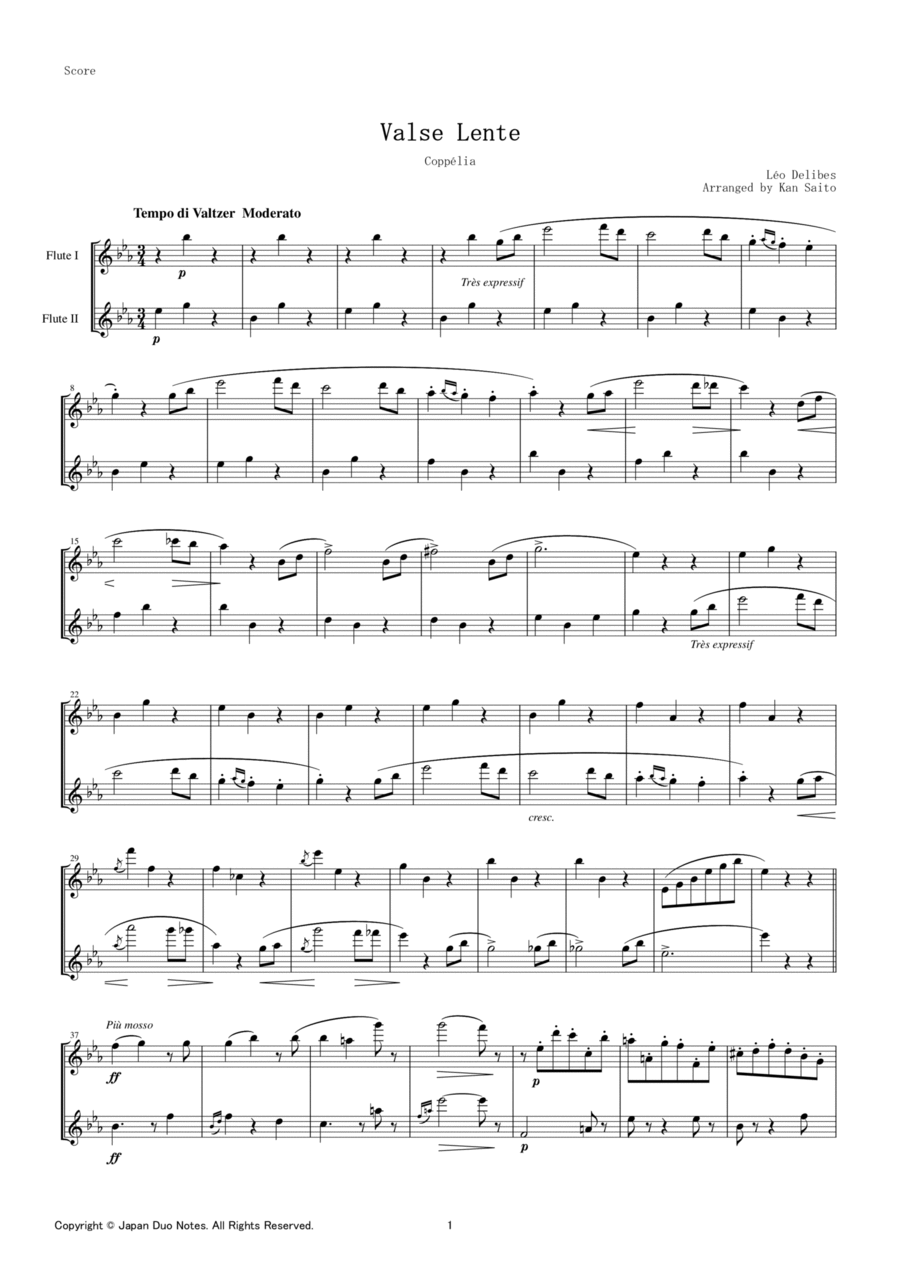Flute Duet Flute - Level 3 - Digital Download SKU: A0.1490315 Composed by Leo Delibes. Arranged by Kan Saito / Japan Duo Notes. 19th Century,20th Century,Classical,Film/TV,Opera. Score. 3 pages. Japan Duo Notes #1067155. Published by Japan Duo Notes (A0.1490315). Title: Waltz (from Coppélia) by Léo Delibes – Flute Duet ArrangementDescription:Bring the enchanting elegance of Léo Delibes’ Waltz from Coppélia to life with this charming flute duet arrangement. Originally part of Delibes’ beloved ballet Coppélia, this waltz is celebrated for its graceful melody and lively rhythm, capturing the spirit and joy of classical ballet. This arrangement beautifully adapts the dance-like quality of the original score for two flutes, offering a delightful and engaging performance piece for flutists.Key Features:Composer: Léo DelibesArrangement: Flute DuetDifficulty Level: IntermediateFormat: Digital Sheet Music PDFPages: Score: 3 pagesThis flute duet arrangement of the Waltz from Coppélia retains the light, flowing character and melodic charm of Delibes’ original composition, making it an excellent choice for concert performances, recitals, and educational settings. Flutists will enjoy the opportunity to explore the elegant phrasing and rhythmic vitality that make this waltz a timeless favorite.Why Choose This Arrangement?Faithful Adaptation: Preserves the lively, dance-like quality of Delibes’ original waltz, expertly arranged for two flutes.Versatile and Enjoyable: Ideal for a variety of performance settings, from recitals to chamber music concerts.Musically Rewarding: Designed for intermediate flutists, offering a perfect blend of technical ease and expressive potential.Enhance your flute repertoire with this delightful arrangement of Léo Delibes’ Waltz from Coppélia for flute duet. It’s a perfect piece for flutists who love the elegance of ballet music and wish to perform a classical favorite.Keywords: Léo Delibes, Waltz, Coppélia, flute duet, flute sheet music, Delibes arrangements, ballet music, flute ensemble, intermediate flute music, classical music, concert flute duet, recital music, ballet waltz.
